Search
Remove Ads
Advertisement
Summary 
Loading AI-generated summary based on World History Encyclopedia articles ...
Search Results
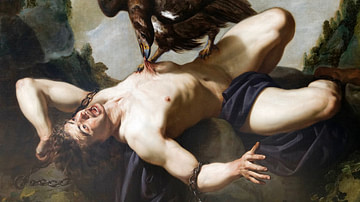
Definition
Prometheus Bound
The Greek dramatist Aeschylus (c. 525 - c. 456 BCE) is considered one of the greatest tragic playwrights of his generation. He is often referred to as the “Father of Greek Tragedy.” Older than both Sophocles and Euripides, he was the most...
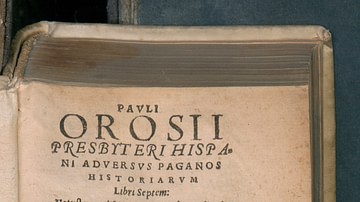
Image
Seven Books of History Against the Pagans
Orosius' (5th century CE) Historiae adversus paganos, 1561 CE edition. Available in the BEIC digital library.
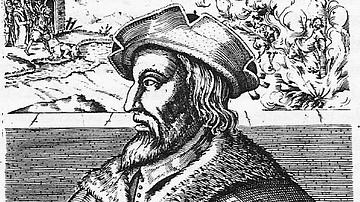
Article
Hubmaier's Concerning Heretics and Those Who Burn Them
Balthasar Hubmaier (l. 1480-1528) was a Catholic theologian who converted to the Protestant Anabaptist sect in 1525. His Concerning Heretics and Those Who Burn Them (1524) was a plea for religious tolerance written prior to his conversion...
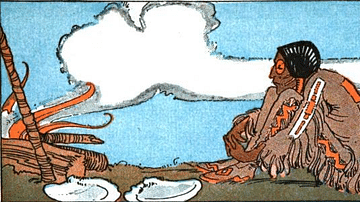
Article
The Bound Children
The Bound Children is a Sioux legend highlighting the importance of proper behavior, not only among family members but within one's community. The widow, who does not properly care for her children, is punished, along with those who support...
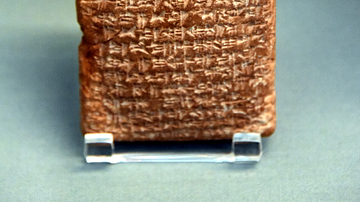
Image
Treaty Concerning Fugitive Slaves
The cuneiform inscription on this clay tablets narrates the treaty between king Idmiri of Alalakh (Tell Atchana) and Pillia of Kizzuwatna (Cilicia). It concerns the capture and transportation of escaped slaves. There is also a reference to...

Definition
Seven Against Thebes
Seven Against Thebes is the third part of a trilogy written by one of the greatest of the Greek tragedians, Aeschylus in 467 BCE, winning first prize in competition at Dionysia. Unfortunately, only fragments of the first two plays, Laius...
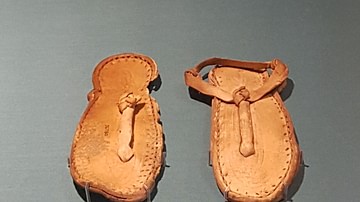
Image
Egyptian Child's Leather Sandals
Child's sandals from Thebes, Egypt. New Kingdom of Egypt, c. 1550-1069 BCE. The British Museum, London. Photo taken at The Powerhouse Museum, Sydney. Sandals are often found in tombs. They are usually made of woven reeds or wood, but...
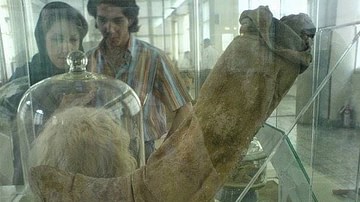
Image
Saltman's Leather Boot
The leather boot belonging the Saltman found by the miners with parts of the leg and the foot is still in the boot. The boot is displayed in the National Museum Tehran. (Image 2)
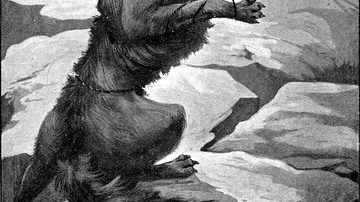
Image
Fenrir Bound
An illustration showing Fenrir, the great wolf of Norse mythology trying to escape from his bindings. (From Guerber, H. A., 'Myths of the Norsemen from the Eddas and Sagas'. London, Harrap, 1909)
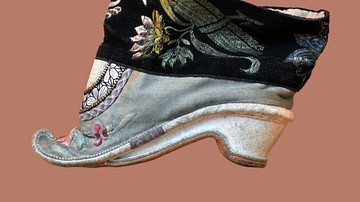
Image
Chinese Shoe for a Bound Foot
A Chinese silk shoe designed to be worn by a woman with bound-feet. 18th century CE. (Musées du château des Rohan, Musée Louise Weiss, Saverne, France)